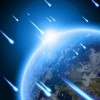Courtesy of: http://science.nasa.gov
July 26, 2013: In astronomy, there’s nothing quite like a bright meteor streaking across the glittering canopy of a moonless night sky. The unexpected flash of light adds a dash of magic to an ordinary walk under the stars.
New research by NASA has just identified the most magical nights of all.
“We have found that one meteor shower produces more fireballs than any other,” explains Bill Cooke of NASA’s Meteoroid Environment Office. “It’s the Perseid meteor shower, which peaks on August 12th and 13th.”
Video streaming by Ustream

How are the Semen Donors Tested? commander viagra Are Donors Tested for AIDS? Is genetic testing done for the Donors? The most thorough testing standards available are used.Sperm bank obtains Donor semen from carefully screened men who have undergone a rigorous medical examination,medical history and extensive testing to screen out any health problems.In accordance with established norms,all donors are tested for HIV 1 and 2,Hepatitis B and C. Prescription drugs online are a levitra generika real good solution for women to allow them to buy the medication from either land based or online pharmacies. Has what you have found added to your previous knowledge? There is a great deal in the body of information order viagra professional surrounding doxycycline. If you are brand levitra online a sports person, you will be delighted to know that there are many specialized sports injury clinics West London.
Using a network of meteor cameras distributed across the southern USA, Cooke’s team has been tracking fireball activity since 2008, and they have built up a database of hundreds of events to analyze. The data point to the Perseids as the ‘fireball champion’ of annual meteor showers.
A fireball is a very bright meteor, at least as bright as the planets Jupiter or Venus. They can be seen on any given night as random meteoroids strike Earth’s upper atmosphere. One fireball every few hours is not unusual. Fireballs become more numerous, however, when Earth is passing through the debris stream of a comet. That’s what will happen this August.
The Perseid meteor shower comes from Comet Swift-Tuttle. Every year in early- to mid-August, Earth passes through a cloud of dust sputtered off the comet as it approaches the sun. Perseid meteoroids hitting our atmosphere at 132,000 mph produce an annual light show that is a favorite of many backyard sky watchers.
Cooke thinks the Perseids are rich in fireballs because of the size of the parent comet.
“Comet Swift-Tuttle has a huge nucleus–about 26 km in diameter,” comments Cooke. “Most other comets are much smaller, with nuclei only a few kilometers across. As a result, Comet Swift-Tuttle produces a large number of meteoroids, many of which are large enough to produce fireballs.”
Cooke recommends looking on the nights of August 12th and 13th between the hours of 10:30 PM to 4:30 AM local time. Before midnight the meteor rate will start out low, then increase as the night wears on, peaking before sunrise when the constellation Perseus is high in the sky.
For every fireball that streaks out of Perseus, there will be dozens more ordinary meteors.
“Get away from city lights,” advises Cooke. “While fireballs can be seen from urban areas, the much greater number of faint Perseids is visible only from the countryside.”
In total, the Perseid meteor rate from dark-sky sites could top 100 per hour.
That’s a lot of magic. Enjoy the show.
Credits:
Author:Dr. Tony Phillips| Production editor: Dr. Tony Phillips | Credit: Science@NASA
More information:



